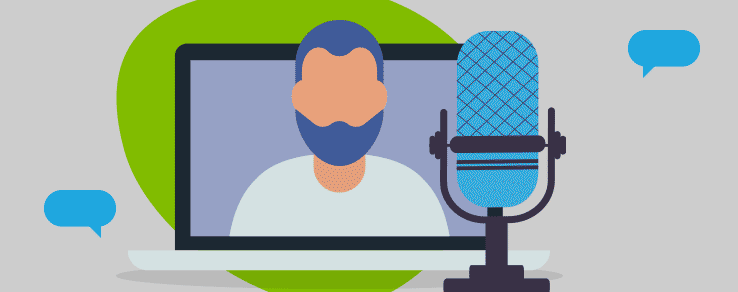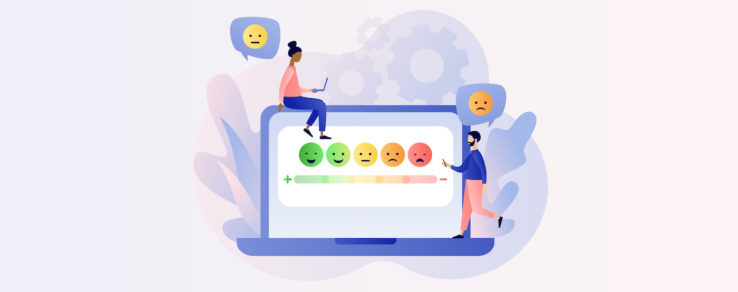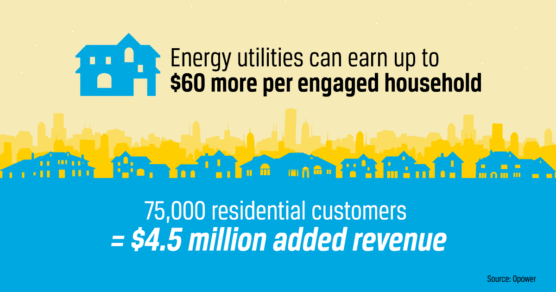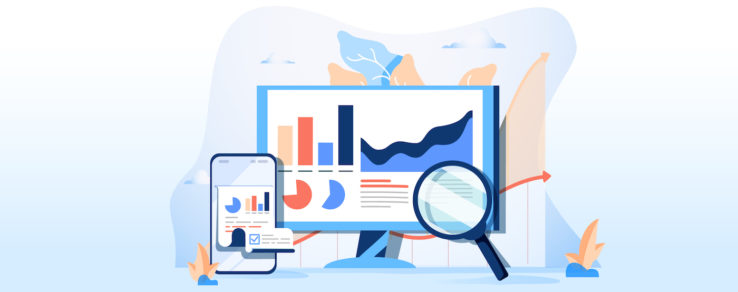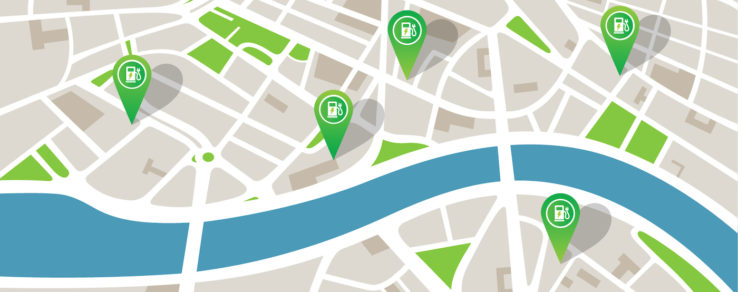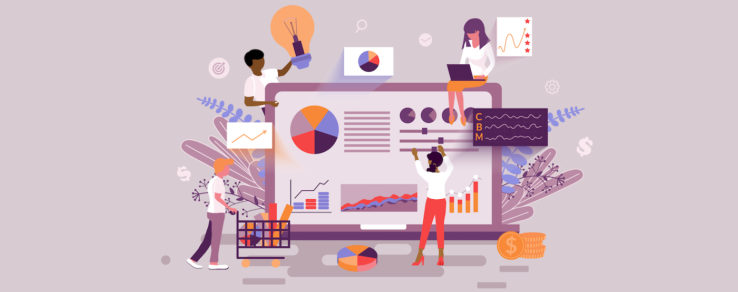Discover these best practices for creating a winning webinar content strategy to educate utility customers and employees.
In today’s digital world of Zoom and FaceTime, webinars are booming. In fact, a recent study finds the use of webinars increased by 162% and attendance nearly quadrupled in the past two years. That’s why it important for energy utilities to take advantage of a webinar content strategy to educate and engage customers and employees.
“Webinars are proven to be a convenient and cost-effective outreach effort to educate customers,” says Mike Carter, Senior Energy Analyst with Questline Digital. “This form of communication positions your energy utility as a go-to expert and resource for energy end-use implementation. Customers become more confident that their utility can help them.”
Prior to the coronavirus pandemic, energy utilities would host a variety of events in person for business customers, residential customers, trade allies and other audiences. This would require them to rent a hall or hotel meeting space, along with AV equipment, and cater a lunch or breakfast for hundreds of attendees. A webinar simplifies this often-complicated process, saving time and expense while achieving the same goal.
“First and foremost, webinars allow a democratization of access, so customers don’t need to attend a training in person,” says Josh Platt, Account Director with Questline Digital. “You can accomplish the same thing with a webinar for less cost and effort. Plus, you’re able to reach more people who otherwise would not be able to attend.”
Ready to use webinars to provide value to customers at a low cost? The next step is building your webinar content strategy. This is not a one-size-fits-all solution — it requires a tailored approach based on your target audience, trending topics and your program goals.
Connect with C&I customers
Webinars are a popular platform to reach commercial and industrial (C&I) customers, as this audience is accustomed to learning through virtual environments. Plus, business owners and facility managers regularly lean on their energy utility provider for guidance around energy and cost-savings programs and safety solutions.
With an effective webinar content strategy, your energy utility can educate C&I customers on ways to reduce costs, increase energy efficiency and solve facility-related issues. Carter recommends monthly webinars as an ideal frequency to serve as an energy resource for commercial customers.
“Another important benefit of webinars is addressing the age-old human question: What have you done for me lately?” Carter explains. “If you have a webinar every month, your business customers are reminded that their utility is here for them with the right resources.”
To develop a webinar content strategy that resonates with C&I customers, you’ll need to focus on common issues facing businesses in your service territory. For example, perhaps many businesses have experienced power quality issues or requested guidance on electrifying their warehouses and fleets.
“If businesses are having power quality issues and you haven’t been able to do enough to fix it, help them deal with that with a power quality basics webinar,” Carter explains. “If your utility is launching a new rebate for electric forklifts, create a webinar that educates customers about the benefits of the program and electrification.”
When crafting your webinar content strategy, Platt recommends taking advantage of seasonal topics. For example, since businesses are conducting maintenance on their cooling units in the winter (when they are not in use), consider creating a related webinar in January or February. Likewise, consider a webinar that discusses boiler maintenance in the summertime.
“Thinking about seasonal topics is essential — you need to be working months ahead of the season,” Platt says. “If you’re a retailer, you’re not planning for Christmas in December, you’re planning in March or April.”
According to Questline Digital’s 2021 Benchmarks Report, the top 10 most popular webinar topics for C&I customers included:
- Chiller/RTU maintenance
- ENERGY STAR ® portfolio manager
- Improving the quality of indoor air
- Energy efficiency for commercial customers
- Energy savings opportunities for schools
- Power quality solutions
- Energy efficiency financial analysis
- Compressed air energy management
- Energy storage
- Standby generators for business continuity
Be an energy resource for residential customers
Residential customers are more challenging to reach with webinars. This target audience isn’t often thinking about their energy provider unless they get their monthly bill or a power outage occurs. Your webinar content strategy for residential customers should include trending topics and relevant programs and services.
According to Carter, residential customers are often motivated by gadgets and the latest tech, such as smart home technology, electric vehicles and solar power. Consider a webinar strategy that discusses ways to save energy with smart home devices or the benefits of owning an EV.
“When there is a new rollout of a program, a webinar is a great way to communicate the details with your customers,” Carter explains. “This could be done on an as-needed basis, such as when your utility is debuting a new EV rebate program.”
Webinars can also help residential customers learn about services they may not even realize your energy utility offers. For example, many customers are unaware that your utility offers an energy marketplace. Consider creating a webinar that educates customers on the benefits of shopping at your marketplace over big box retailers.
“If you’re running an email promotion, a social media campaign or have a page on your website promoting something, there is no reason why you couldn’t do a webinar too,” Platt says.
Your webinar content strategy should also help notify customers of important information they need to know. For example, if your utility is implementing a new rate plan, a webinar can help ensure trust and transparency between your utility and residential customers.
Questline Digital worked with a large Southwest energy utility to create a webinar series about their payment assistance program to customers facing financial hardship. Before utilizing webinars, the utility was renting a hotel meeting space where they might get around 30 customers to attend the in-person event, Platt notes. Many customers in this demographic can’t leave work to attend an event, so a 30-minute webinar is much more feasible.
“Now, they can have 1,000 customers attend for a third of the cost,” Platt explains. “Plus, the webinar can be recorded and repurposed for YouTube or Facebook, giving these customers the ability to watch the webinar on their own time. It truly makes the information outreach more egalitarian.”
Educate utility employees with a webinar content strategy
In addition to engaging with residential and business customers, webinars are also an effective platform to educate energy utility employees.
When creating a webinar content strategy for utility employees, consider what topics will help them become energy experts and resources for customers. This is also an opportunity to refresh employees on the details of your various programs and services.
“Webinars are one of the best options to increase employee engagement and education,” says Jayne Culbertson, Senior Account Manager with Questline Digital. “This platform allows employees to take a deeper dive into a topic compared to just reading an article or watching a video. Plus, utilities can obtain employee feedback, which is invaluable.”
Questline Digital worked with a major Southeast energy utility to create monthly training webinars for account managers and new employees. The webinars, which focused on a variety of business topics, helped their employees become a source of knowledge for commercial customers. Following each webinar, the recording is added to the utility’s internal learning management system to give employees a chance to watch at a later time.
“Our utility client created a custom webinar to help employees learn about electric forklifts,” Culbertson explains. “The webinar highlighted the benefits of electric forklifts and provided specific details about the related rebate program. All of the webinars feature relevant information and trending topics that employees are likely to get questions about.”
Another webinar topic, commercial kitchens, was designed to educate account managers on energy efficient kitchens for restaurants, schools and other facilities. With the right webinar content strategy, utility employees can enhance their knowledge on valuable topics of interest to both residential and business customers.
“Webinars are a complement to other communication efforts, such as newsletters, email promotions and social media,” Culbertson says. “It’s important to select and align webinar topics around other programs and initiatives at your utility so customers are getting the same information on the platform that works best for them.”
Webinars Bring Value, Greater Convenience to Customers
In today’s digital landscape, consumers are accustomed to learning and attending events online. Webinars give your customers and employees valuable information without the hassle of commuting to a hotel or event space. Whether you’re looking to educate customers or employees, webinars are an essential tool in your marketing strategy.
